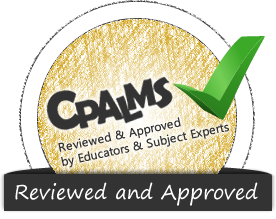Please sign in to access this resource
Not a Florida public school educator?
Access this resourceon CPALMS.com
General Information
Freely Available: Yes
Aligned Standards
This vetted resource aligns to concepts or skills in these benchmarks.6 Lesson Plans
In this lesson, students analyze primary source documents and engage in a Structured Academic Controversy in an effort to answer the central historical question: Was [Haymarket Riot defendant] Albert Parsons a dangerous man? First, the teacher uses a timeline to introduce Haymarket and the 8 men put on trial in its aftermath. Students are then given 6 documents-several by Parsons himself, but also a newspaper account of the trial, trial testimony, and a 2006 secondary source-and answer guiding questions. Students then divide into groups of 4 and into pairs within each group. Each pair presents the argument to the other that Parson was/was not "dangerous"; only at the end can students abandon their previous positions, reach consensus in writing as a group, and defend that view in a final class discussion.
In this lesson, students analyze primary source documents in an effort to answer the central historical question: What factors contributed to the Chinese Exclusion Act? After a mini-lecture on the Transcontinental Railroad, students read a timeline and formulate hypotheses as to why Chinese were legally excluded from mainstream society in 1882. They then answer guiding questions on 4 documents: 1) an anti-Chinese play, 2) a Thomas Nast cartoon, 3) an anti-Chinese speech, and 4) the autobiography of a Chinese immigrant. For homework, students write a 1-page answer to the central question using evidence from the documents.
In this lesson, students analyze primary source documents in an effort to answer the central historical question: Why did the Homestead Strike turn violent? The teacher first recaps labor/industry relations of the era and introduces the Homestead Strike with a timeline. The teacher then models sourcing and close reading techniques with a document: Emma Goldman's 1931 autobiography. Students then do the same with an 1892 newspaper interview of Henry Frick, followed by corroboration guiding questions that pit the 2 authors against each other. In a final class discussion, students evaluate the validity of the sources and debate whether the historical "truth" about the strike is knowable.
In this lesson, students analyze primary sources in an effort to answer the central historical question: Why did the Populist Party attract millions of supporters? The teacher begins with a PowerPoint which reviews the struggles of farmers and the emergence of political populism. Students then read a speech by populist speaker Mary Elizabeth Lease and annotate it. They then answer guiding questions about William Jennings Bryan's "Cross of Gold" speech (excerpt). A final class discussion attempts to explain populism's appeal-then and now.
In this lesson, students analyze primary source documents in an effort to answer the central historical question: How did Chicago newspapers cover the Pullman strike? The teacher begins by placing the Pullman strike in the context of other labor strikes and using a PowerPoint to convey basic information. Students are then divided into 4 groups, and each is given a different set of articles-1 each from the Chicago Times and Chicago Tribune-and told to use close reading strategies to figure out which paper was biased against the strikers and which favored them. Finally, each group chooses a representative to present to the entire class how that group arrived at its conclusion.
In this lesson, students analyze primary source documents in an effort to answer the central historical question: Why did the Democrats defeat the Fusion ticket in the 1898 North Carolina election? The teacher first recaps Southern politics and Populism, and then goes over a timeline. Students, in groups, analyze 3 documents-an account of a speech by Senator Ben Tillman, a proclamation by Governor Daniel Russell, and a race-baiting political cartoon-and answer guiding questions. A final class discussion attempts to explain why Democrats won in 1898.
![Cpalms [Logo]](/images/cpalms_color.png)






 Open Resource Page
Open Resource Page


